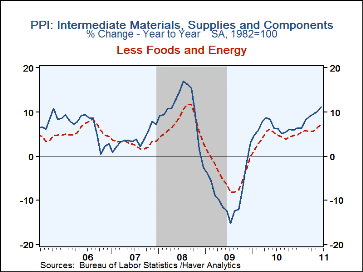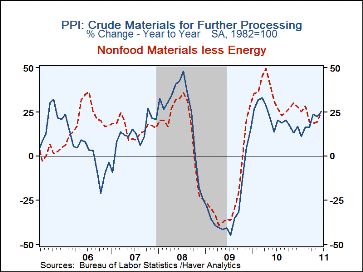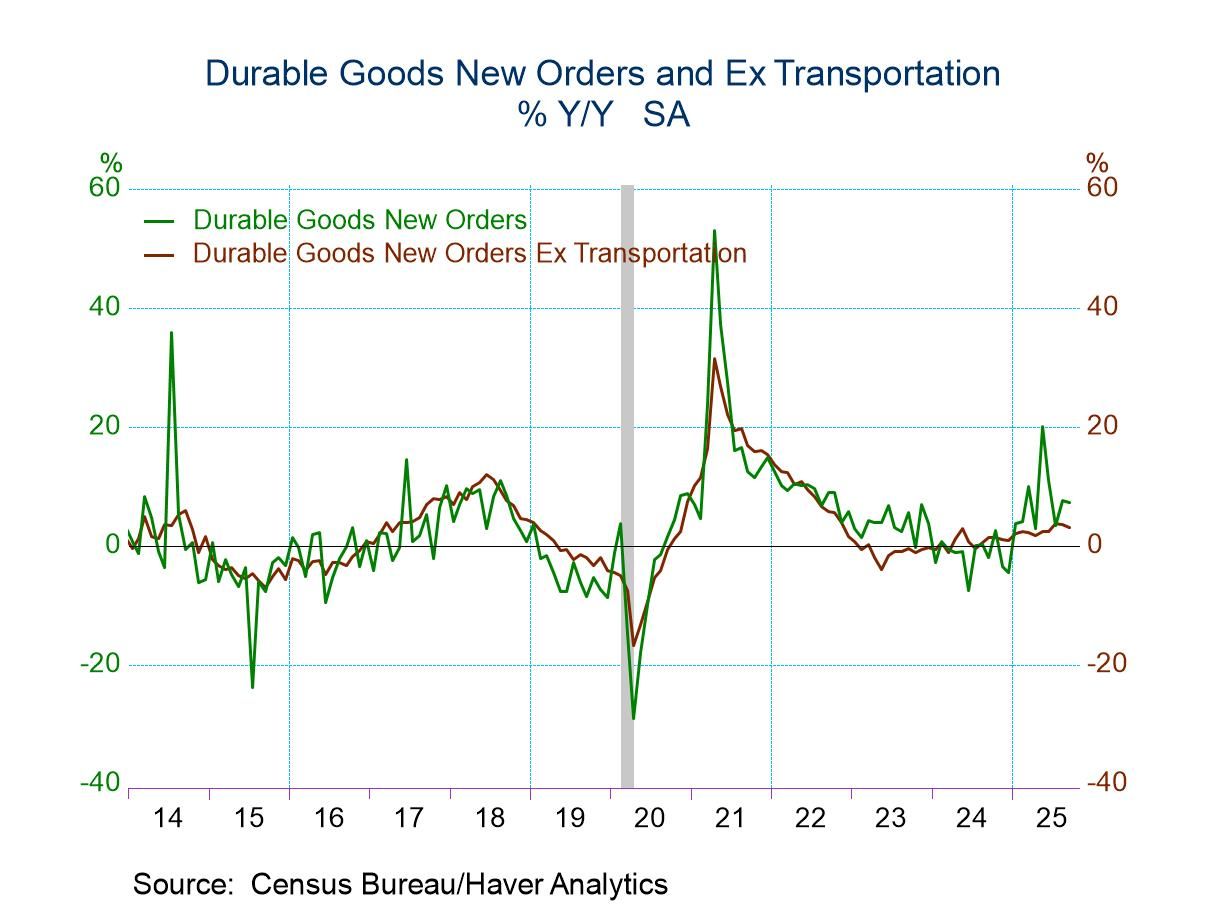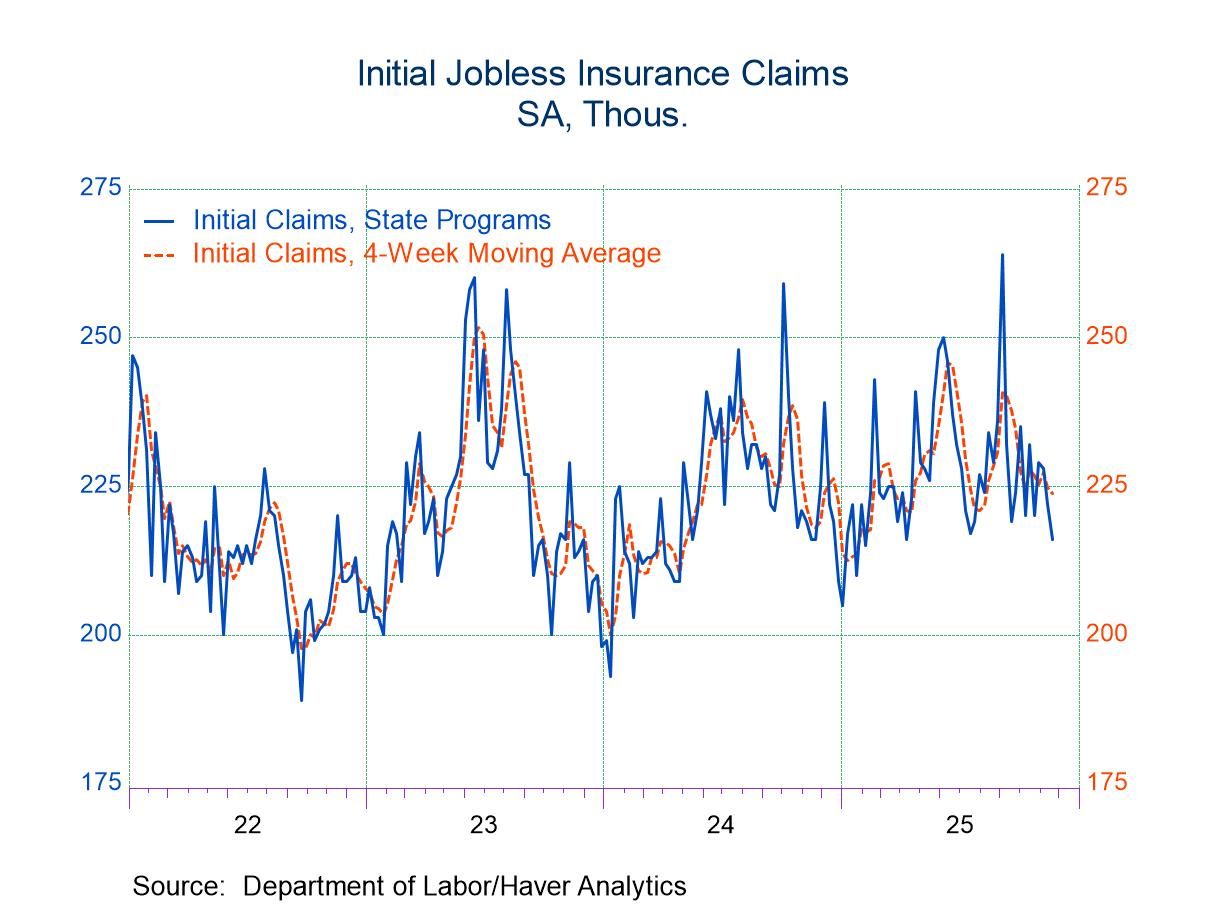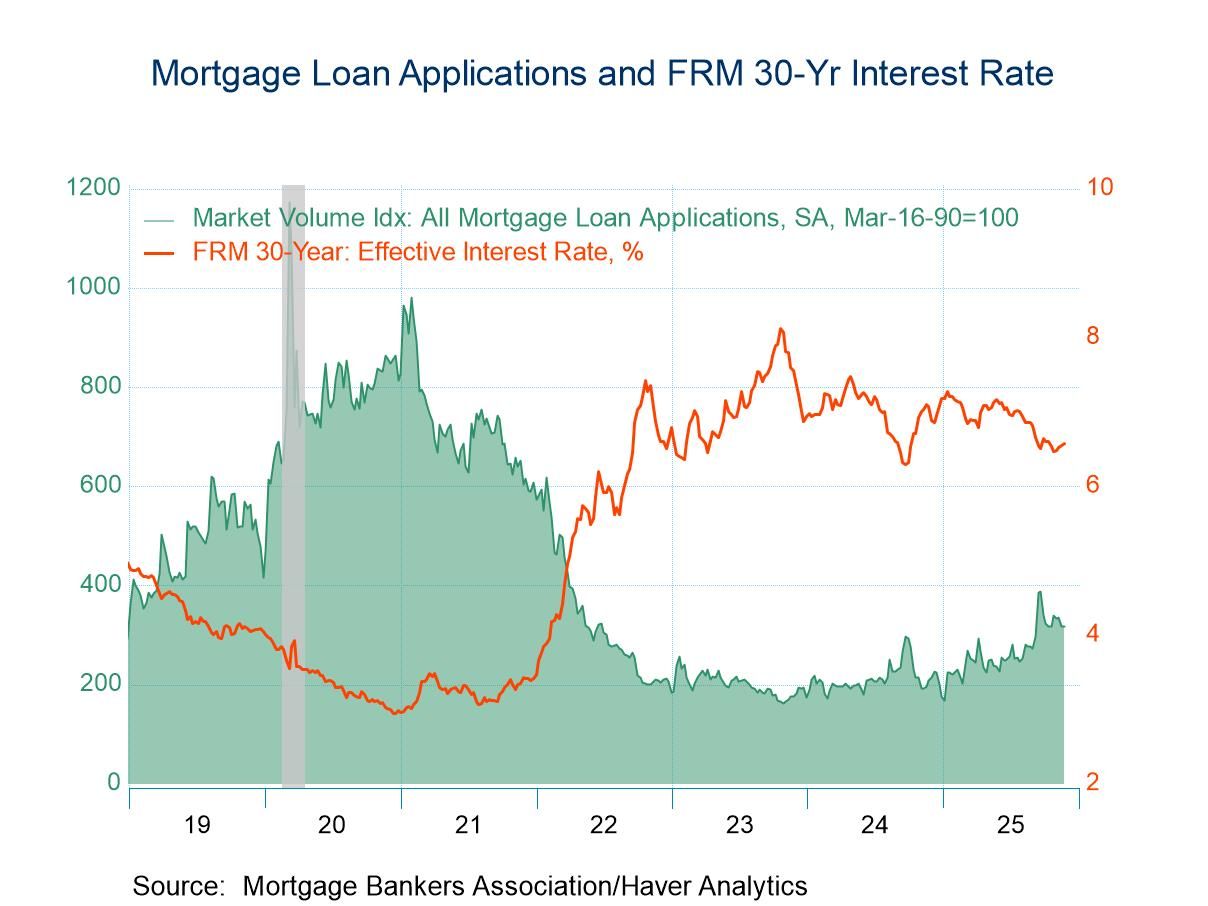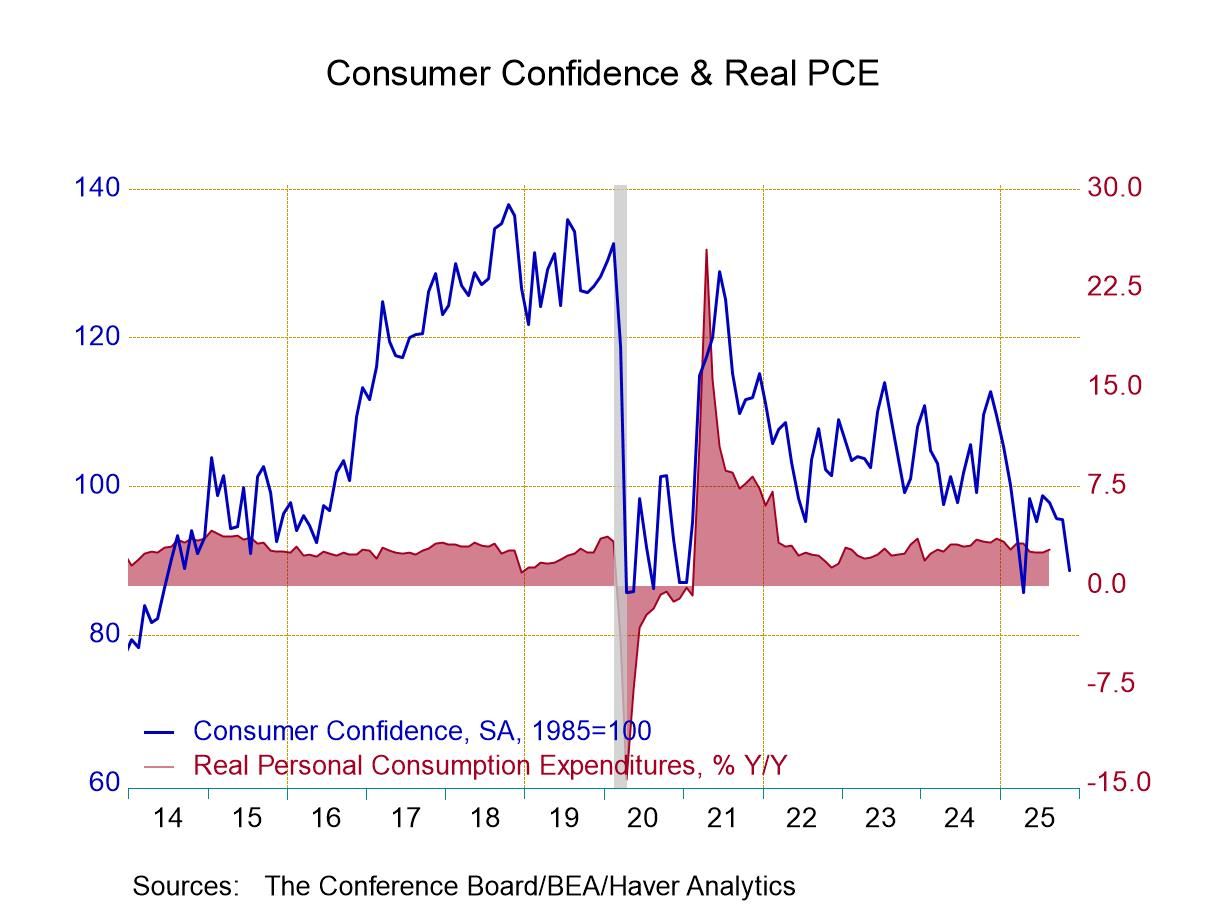 Global| Jul 14 2011
Global| Jul 14 2011U.S. PPI Falls With Lower Energy Costs; Core Prices Strengthen
by:Tom Moeller
|in:Economy in Brief
Summary
The U.S. producer price index for finished goods fell 0.4% last month, pulled down by a 2.8% drop in energy. The figure compared to Consensus expectations for a 0.2% decline. The energy price decline reflected an 8.8% drop (NSA, [...]
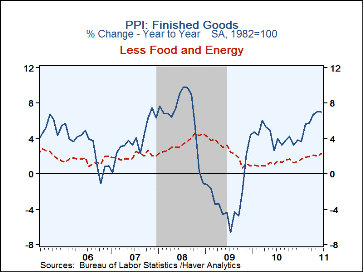 The U.S. producer price index for finished goods fell 0.4% last
month, pulled down by a 2.8% drop in energy. The figure compared to
Consensus expectations for a 0.2% decline. The energy price decline
reflected an 8.8% drop (NSA, +43.0% y/y) in gasoline and a 2.1% decline
(+45.9% y/y) in home heating oil. Electric power costs rose just 0.9%
(0.4% y/y). Food prices rose a strengthened 0.6% (7.3% y/y). Excluding
both energy & food, prices also rose a strengthened 0.3%. The y/y gain
of 2.3% was the strongest in nearly two years.
The U.S. producer price index for finished goods fell 0.4% last
month, pulled down by a 2.8% drop in energy. The figure compared to
Consensus expectations for a 0.2% decline. The energy price decline
reflected an 8.8% drop (NSA, +43.0% y/y) in gasoline and a 2.1% decline
(+45.9% y/y) in home heating oil. Electric power costs rose just 0.9%
(0.4% y/y). Food prices rose a strengthened 0.6% (7.3% y/y). Excluding
both energy & food, prices also rose a strengthened 0.3%. The y/y gain
of 2.3% was the strongest in nearly two years.
Finished consumer goods prices fell 0.6% (+8.9% y/y). Core prices, however, rose a firm 0.4% (2.9% y/y). Furniture prices rose a firm 1.9% y/y and appliance prices rose 0.8% y/y. Men's apparel prices increased 3.2% y/y and women's clothing prices rose 1.3%. Capital equipment prices increased 0.3% last month and by an accelerated 1.6% y/y after a 0.4% uptick during 2010.
Intermediate goods prices were unchanged as energy prices declined 0.8% (+23.3% y/y). That decline was partially offset by a 0.4% increase in food prices (14.5% y/y). Core-intermediate prices rose a lessened 0.3% (7.2% y/y). Crude materials prices slipped another 0.6%. However, prices less food & energy jumped 1.1%. Strength in copper and iron & steel scrap prices continued. Crude energy prices fell 4.1% (+18.6% y/y) but food prices increased 2.1% (32.9% y/y).
The PPI data are contained in Haver's USECON database with further detail in PPI and PPIR. The expectation figure is available in the AS1REPNA database.
| Producer Price Index (%) | Jun | May | Apr | Jun Y/Y | 2010 | 2009 | 2008 |
|---|---|---|---|---|---|---|---|
| Finished Goods | -0.4 | 0.2 | 0.8 | 7.0 | 4.2 | -2.5 | 6.4 |
| Energy | -2.8 | 1.5 | 2.5 | 19.9 | 13.8 | -17.7 | 14.1 |
| Food | 0.6 | -1.4 | 0.3 | 7.3 | 3.9 | -1.4 | 6.8 |
| Less Food & Energy | 0.3 | 0.2 | 0.3 | 2.3 | 1.2 | 2.5 | 3.4 |
| Intermediate Goods | 0.0 | 0.9 | 1.3 | 11.0 | 6.4 | -8.4 | 10.3 |
| Less Food & Energy | 0.3 | 0.9 | 1.1 | 7.2 | 4.3 | -4.2 | 7.4 |
| Crude Materials | -0.6 | -4.1 | 4.0 | 25.5 | 21.4 | -30.3 | 21.5 |
| Less Food & Energy | 1.1 | -0.9 | 2.6 | 25.1 | 32.6 | -23.4 | 14.7 |
Tom Moeller
AuthorMore in Author Profile »Prior to joining Haver Analytics in 2000, Mr. Moeller worked as the Economist at Chancellor Capital Management from 1985 to 1999. There, he developed comprehensive economic forecasts and interpreted economic data for equity and fixed income portfolio managers. Also at Chancellor, Mr. Moeller worked as an equity analyst and was responsible for researching and rating companies in the economically sensitive automobile and housing industries for investment in Chancellor’s equity portfolio. Prior to joining Chancellor, Mr. Moeller was an Economist at Citibank from 1979 to 1984. He also analyzed pricing behavior in the metals industry for the Council on Wage and Price Stability in Washington, D.C. In 1999, Mr. Moeller received the award for most accurate forecast from the Forecasters' Club of New York. From 1990 to 1992 he was President of the New York Association for Business Economists. Mr. Moeller earned an M.B.A. in Finance from Fordham University, where he graduated in 1987. He holds a Bachelor of Arts in Economics from George Washington University.


